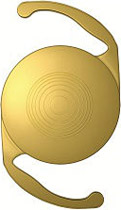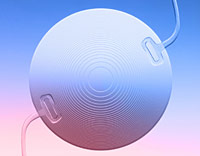
The ReSTOR multifocal is an intraocular lens that is implanted during cataract surgery after the cataract has been removed. In contrast to a standard monofocal lens, the ReSTOR multifocal allows patients to see both far and near in focus at the same time.
This lens comes in three different options which vary in how close the near vision is away from the patient’s face. Patients can chose a lens where the near vision is at an intermediate range (useful for seeing the computer screen), one where the near vision is a little closer (useful for reading the newspaper on a table), or one that is up close (useful for near-work activities).
